In the high-stakes arena of professional hockey, where the margin between victory and defeat can be razor-thin, goalies rely on a combination of skill, strategy, and meticulous preparation.
While fans often focus on their spectacular saves and athletic prowess, a seemingly mundane yet crucial aspect of their pre-game routine often goes unnoticed: the act of scraping the ice in and around their crease.
This point will explore the science, strategy, and psychology behind this practice, revealing how it gives goalies a tangible edge in their battle against the puck.
1. Slowing Down the Puck: Creating Friction for a Strategic Advantage
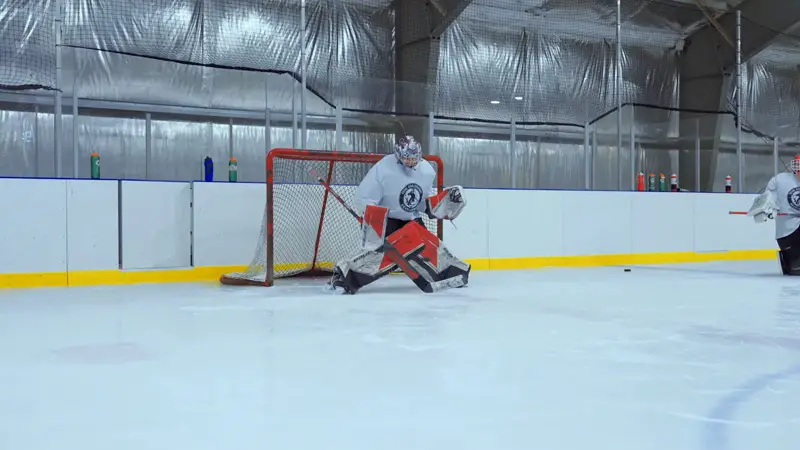
A freshly resurfaced ice rink, while a skater’s delight, presents a unique challenge for goalies. The smoother the ice, the faster and more unpredictable the puck’s trajectory, making it exponentially harder to track and stop.
This is where ice scraping comes into play. By using their skates and sticks to create a slightly rougher surface, goalies strategically introduce friction, effectively slowing down the puck and buying themselves precious milliseconds to react.
The scientific principle at work here is the coefficient of friction. A rougher surface increases this coefficient, creating more resistance against the puck’s motion.
Imagine the difference between rolling a ball across a polished floor and rolling it across a carpet. The carpet’s texture creates friction, slowing the ball down.
Goalies apply this same principle in their crease, creating a “slower” ice surface that can be the difference between a save and a goal, especially against those low, trickling shots that often decide games.
2. Controlling the Slide: Achieving Consistency and Precision in Every Save
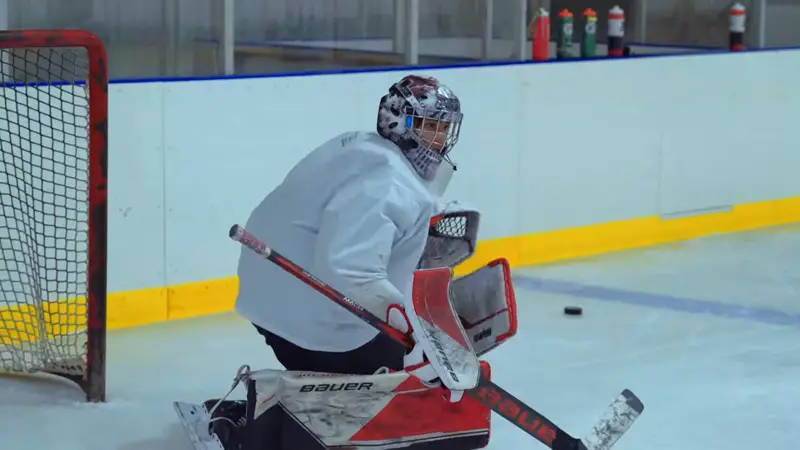
A goalie’s movements within their crease are a symphony of precision and agility, a constant interplay between anticipation and reaction.
To perform at their peak, they need a surface that offers both stability and responsiveness. Ice scraping plays a crucial role here as well.
By roughening up the ice, goalies reduce its slipperiness, creating a surface that allows for more controlled sliding. This control is paramount for maintaining optimal positioning and reacting swiftly to the puck’s unpredictable movements.
Think of it like driving a car on different road surfaces. On dry pavement, you have good traction and control, but on ice, the slightest turn of the steering wheel can send you skidding.
Goalies face a similar challenge on a freshly resurfaced rink. By strategically scraping the ice, they essentially create a “drier” surface within their crease, giving them the control and consistency they need to execute those split-second saves.
3. Beyond the Zamboni: Leveling the Playing Field, One Scrape at a Time
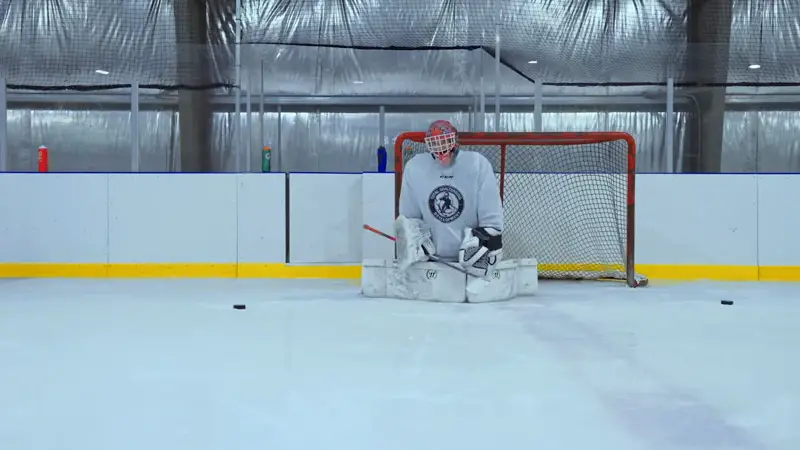
While a Zamboni does an excellent job of smoothing the ice, it can sometimes leave behind subtle imperfections – slight bumps or uneven patches, particularly in high-traffic areas like the crease.
These seemingly insignificant flaws can have a major impact on the puck’s behavior, causing it to bounce unpredictably or change direction at the last moment.
Goalies, acutely aware of these potential pitfalls, use ice scraping to level the playing field, both literally and figuratively.
By diligently smoothing out those imperfections, they ensure that the ice within their crease is as predictable as possible.
This meticulous attention to detail highlights the strategic depth of a goalie’s mindset. They understand that even the smallest variable can influence the outcome of a game.
By taking the time to scrape the ice, they’re not just preparing the surface; they’re taking control of their environment, eliminating potential surprises, and maximizing their chances of success.
4. Mental Preparation: Entering the Zone Through Ritual and Focus
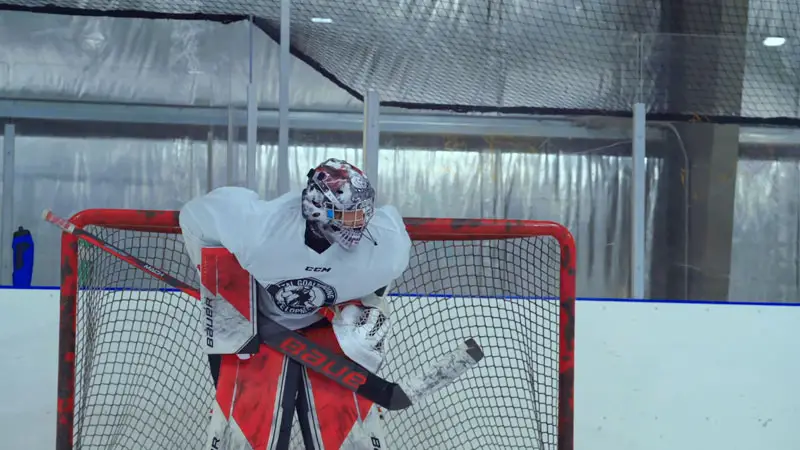
Beyond the physical benefits, ice scraping also serves a crucial psychological function. For goalies, it acts as a pre-game ritual, a way to mentally prepare for the intense focus and pressure that lie ahead.
The repetitive action helps them clear their minds, focus their thoughts, and transition into “game mode.”
It’s akin to a batter taking practice swings before stepping up to the plate or a basketball player dribbling the ball before taking a free throw.
These actions are more than just physical warm-ups; they’re mental cues, helping athletes to settle into a familiar routine, block out distractions, and prepare for the task at hand.
For goalies, the act of scraping the ice provides a sense of control and familiarity, allowing them to enter the game with confidence and composure.
5. More Than Just Scraping: The Goalie’s Crease as a Fortress
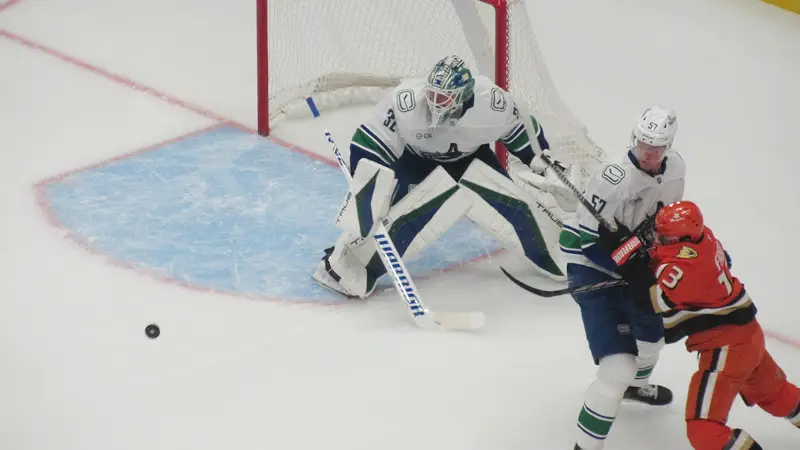
Goalies view their crease as their domain, a space they meticulously prepare and fiercely defend. They are typically on the ice for the full 60 minutes of play, and their crease becomes their zone to protect.
This ownership of the crease is further emphasized by the rules of the game. Opposing players cannot stand within the crease and must not interfere with the goalie’s ability to make a save.
The act of scraping the ice reinforces this sense of ownership and control. It’s a way for goalies to physically and mentally establish their presence in the crease, preparing not only the surface but also their minds for the challenges ahead.
A Deeper Dive into the Details: Additional Insights and Observations
- Bonus Reason: Some goalies use the scraped snow to their advantage by piling it strategically around their goalposts to make wraparound goals more difficult. However, NHL regulations often limit the extent of this tactic, with crews removing excess snow buildup during TV timeouts.
- Warm-Up Ritual: The scraping routine is also part of the goalie’s physical warm-up, allowing them to get a feel for the ice, test their edges, and loosen up their muscles before facing those 100-mile-per-hour slapshots.
- Arena Variations: The quality and consistency of ice can vary significantly from rink to rink, even at the professional level. Some arenas have better ice-making capabilities than others, which can influence the goalie’s scraping strategy.
Conclusion: The Art and Science of Goaltending
The next time you watch a hockey game, take a moment to appreciate the subtle nuances of a goalie’s pre-game routine.
That seemingly simple act of scraping the ice is a testament to their dedication, their strategic thinking, and their deep understanding of the game.
It’s a blend of science, strategy, and ritual, all aimed at giving the goalie every possible advantage in their pursuit of victory.

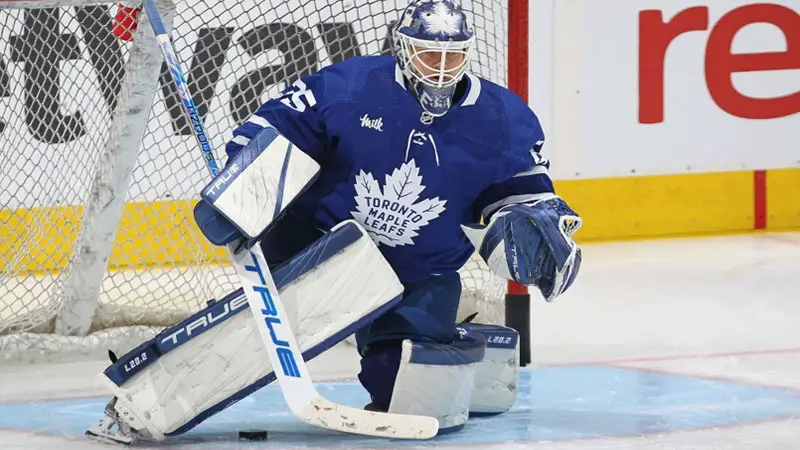



James Felix